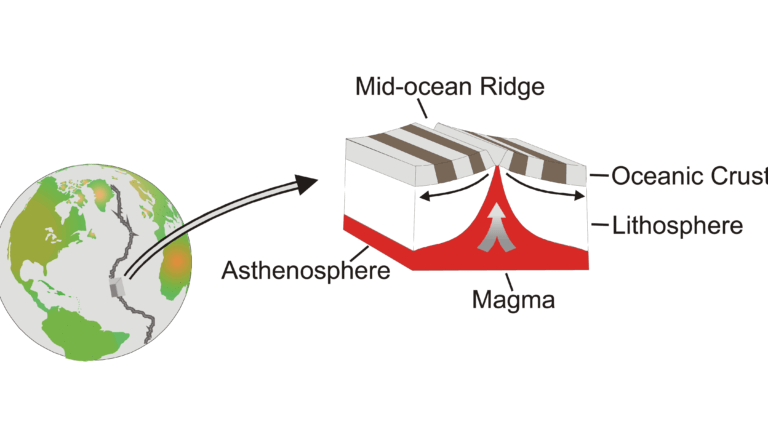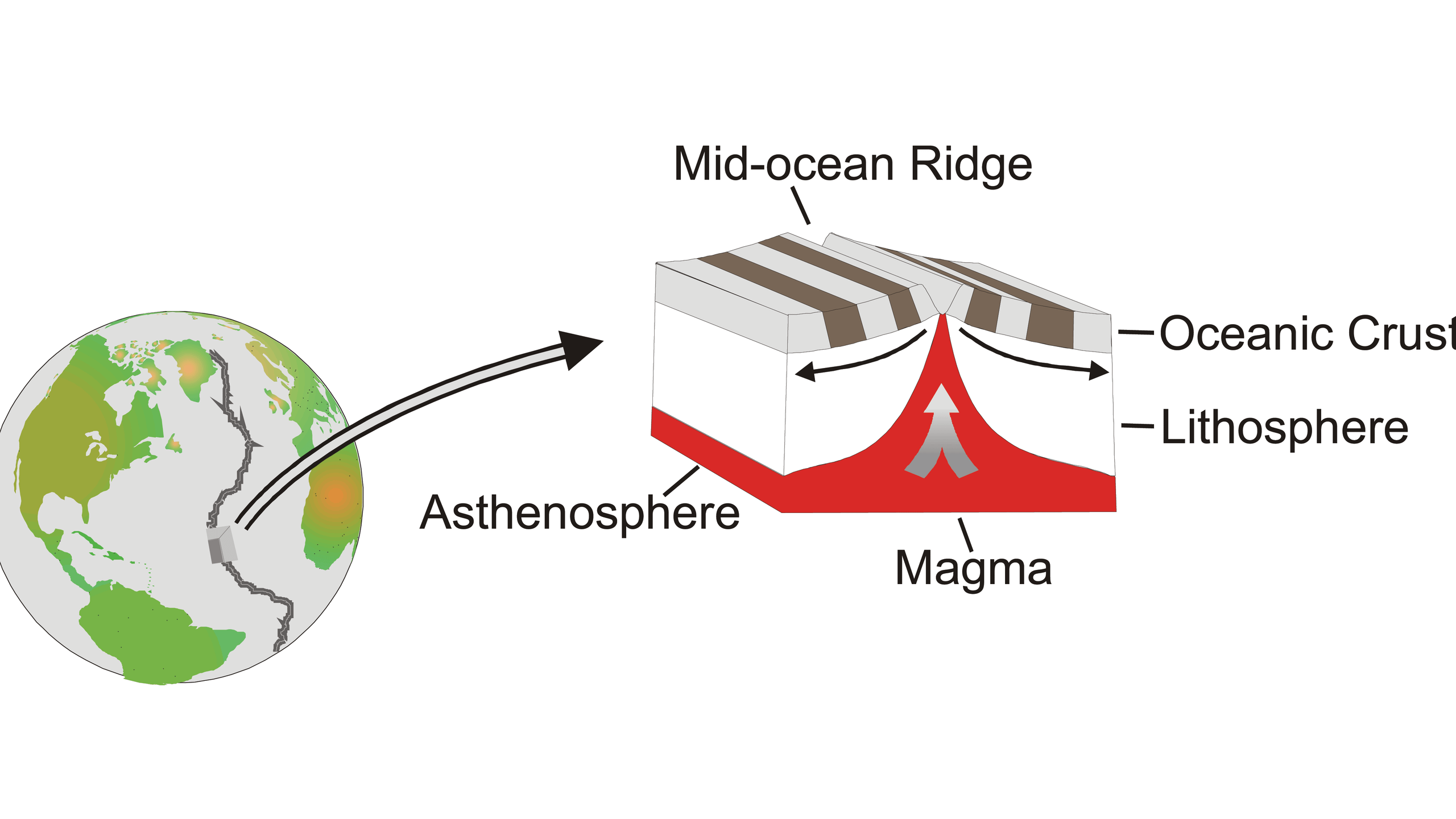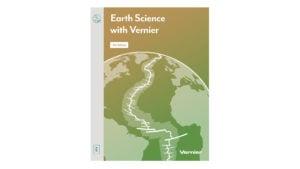
Introduction
According to the theory of plate tectonics, the Earth’s crust is broken into many slowly moving plates. Sea floor spreading occurs at the mid-ocean ridge where two plates are moving away from each other. Here, magma rises up from below as the sea floor spreads out to either side. This spreading occurs at about the same rate as your fingernails grow.
The pattern of sea floor spreading can be observed by studying the magnetic field of the rock on the sea floor. At the mid-ocean ridge, magma rises up from the mantle below and cools. As it continues to cool, iron in the rock aligns itself with the magnetic field of the Earth, much like the needle in a compass. When the rock solidifies, this magnetic “signature” is locked in place.
Throughout history, the orientation of the Earth’s magnetic field has varied greatly. At times, the magnetic pole in the north has reversed completely and was located near the south geographic pole. Because new ocean floor is constantly moving away from the mid-ocean ridge, these reversals appear as bands of alternating magnetic fields as shown in Figure 1. On average, the Earth’s magnetic field reverses every several hundred thousand years with the most recent reversal occurring about 780,000 years ago.
In this experiment, you will use a model of a sea floor spreading zone. The mid-ocean ridge is running north to south down the center of the model. You will use a magnetic field sensor to map the magnetic field of your model and use it to explain how this is evidence of sea floor spreading.
Objectives
In this experiment, you will
- Use a Magnetic Field Sensor to measure magnetic field.
- Map sea floor spreading.
- Interpret your results.
Sensors and Equipment
This experiment features the following sensors and equipment. Additional equipment may be required.
Ready to Experiment?
Ask an Expert
Get answers to your questions about how to teach this experiment with our support team.
- Call toll-free: 888-837-6437
- Chat with Us
- Email support@vernier.com
Purchase the Lab Book
This experiment is #5 of Earth Science with Vernier. The experiment in the book includes student instructions as well as instructor information for set up, helpful hints, and sample graphs and data.



